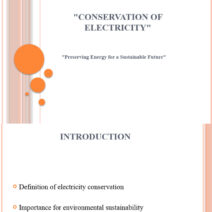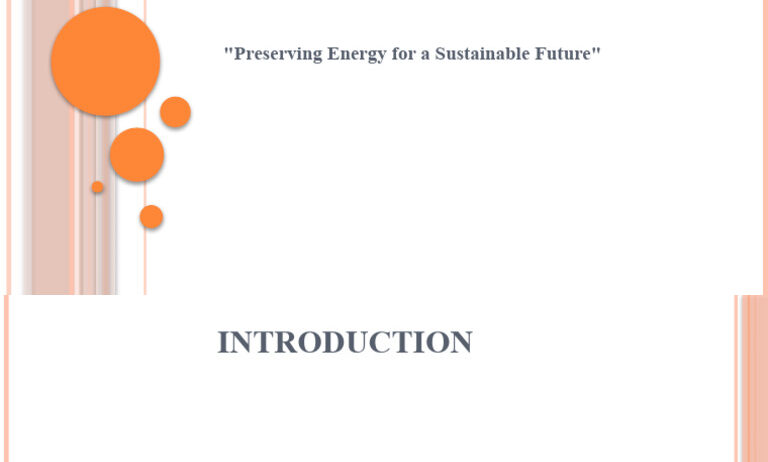Have you ever pondered what happens to the energy we use in our everyday electrical circuits? Imagine this: you flip a switch, and voila, the lights illuminate, your devices awaken, and everything seems vibrant and alive. But have you ever considered the journey of that energy and the impact on our environment? Let’s unravel the relationship between circuits and the conservation of energy to understand how we can contribute to a more sustainable future.
At its core, a circuit is a closed loop that provides a path for electric current to flow. It comprises various components, including power sources, resistors, capacitors, and sometimes, more complex elements like diodes and transistors. The primary function of these components is to facilitate the movement of electrons, which forms the basis of all electrical phenomena. But, as electric current flows, energy transforms—sometimes into usable power and sometimes into heat, sound, or light.
Now, here’s a thought-provoking question: How much energy is actually conserved in a typical circuit? This brings us to the pivotal principle of energy conservation. According to the law of conservation of energy, energy cannot be created or destroyed; it merely changes forms. In circuits, electrical energy might convert into kinetic energy in motors or thermal energy in heating elements. Yet, some energy inevitably dissipates as waste heat due to resistance within the circuits.
Energy loss in circuits is often quantified in terms of efficiency. This efficiency can be defined as the ratio of useful output energy to the total input energy, expressed as a percentage. For example, if a light bulb consumes 100 watts of input energy but only converts 80 watts into light, the efficiency of that bulb is 80%. The remaining 20 watts escapes as heat. This disparity highlights the challenge: while we benefit from electrical energy, a portion is often squandered in undesirable forms.
Understanding circuits can lead us to make informed decisions that promote the conservation of energy. We can consider several factors that impact efficiency. For instance, the materials used in wiring and components can influence resistance. Copper wires are commonly used because of their excellent conductivity, which reduces energy loss. Additionally, the design of the circuit itself can enhance or impair efficiency. A well-designed circuit minimizes resistance and maximizes the flow of energy through optimal pathways.
Now, let’s delve deeper into diverse types of circuits. There are series and parallel circuits, each with distinct properties. In a series circuit, components are connected end-to-end, creating a single path for current. If one element fails, the entire circuit halts. On the other hand, parallel circuits offer multiple pathways for current, so if one pathway fails, others continue to function. This robustness comes into play when considering compound systems like heating or lighting where reliability and consistency are paramount.
When connecting the dots between energy conservation and circuit design, one cannot overlook the significance of renewable energy sources. Circuits powered by renewable means—such as solar panels or wind turbines—offer a compelling argument for conserving energy. By harnessing natural forces, we reduce reliance on fossil fuels, which are primary contributors to climate change. The integration of such renewable systems into household circuits not only promotes sustainability but also emboldens a broader transition towards energy efficiency.
However, the adoption of renewable energy systems does not come without challenges. One of the main challenges is the intermittent nature of these energy sources. The sun doesn’t always shine, and the wind doesn’t always blow. To counter this, energy storage systems, like batteries, are essential to maintaining a steady supply. These systems ensure that energy is conserved and available when needed. Therefore, understanding how circuits can support these technologies is vital for a future heavily dependent on renewables.
Moreover, technology has been evolving, introducing smart circuits and devices that optimize energy usage. Smart circuits can monitor energy consumption in real-time, allowing for adjustments that enhance efficiency. For instance, smart thermostats help regulate heating and cooling based on occupancy, significantly contributing to energy conservation. With the advent of the Internet of Things (IoT), circuits are becoming increasingly interconnected, facilitating a harmonious blend of automation and energy efficiency.
Yet, we must address the elephant in the room: Can technology alone solve the energy crisis? While advancements play a critical role in enhancing conservation efforts, individuals must also cultivate mindfulness in energy consumption. Simple practices such as turning off unused appliances, utilizing energy-efficient light bulbs, and being conscious of peak energy hours can collectively minimize waste. The onus extends beyond technology; it necessitates a communal effort towards responsible consumption.
In conclusion, understanding the intricacies of circuits and their relation to energy conservation may initially sound daunting. However, grasping how energy flows and transforms within these circuits empowers individuals to make choices that not only optimize energy use but contribute to environmental sustainability. While challenges abound, solutions gleam on the horizon in the form of renewable energy, smart technology, and individual actions. If every person embraces their role in this critical dialogue on energy conservation, together, we can illuminate a path toward a greener future.






